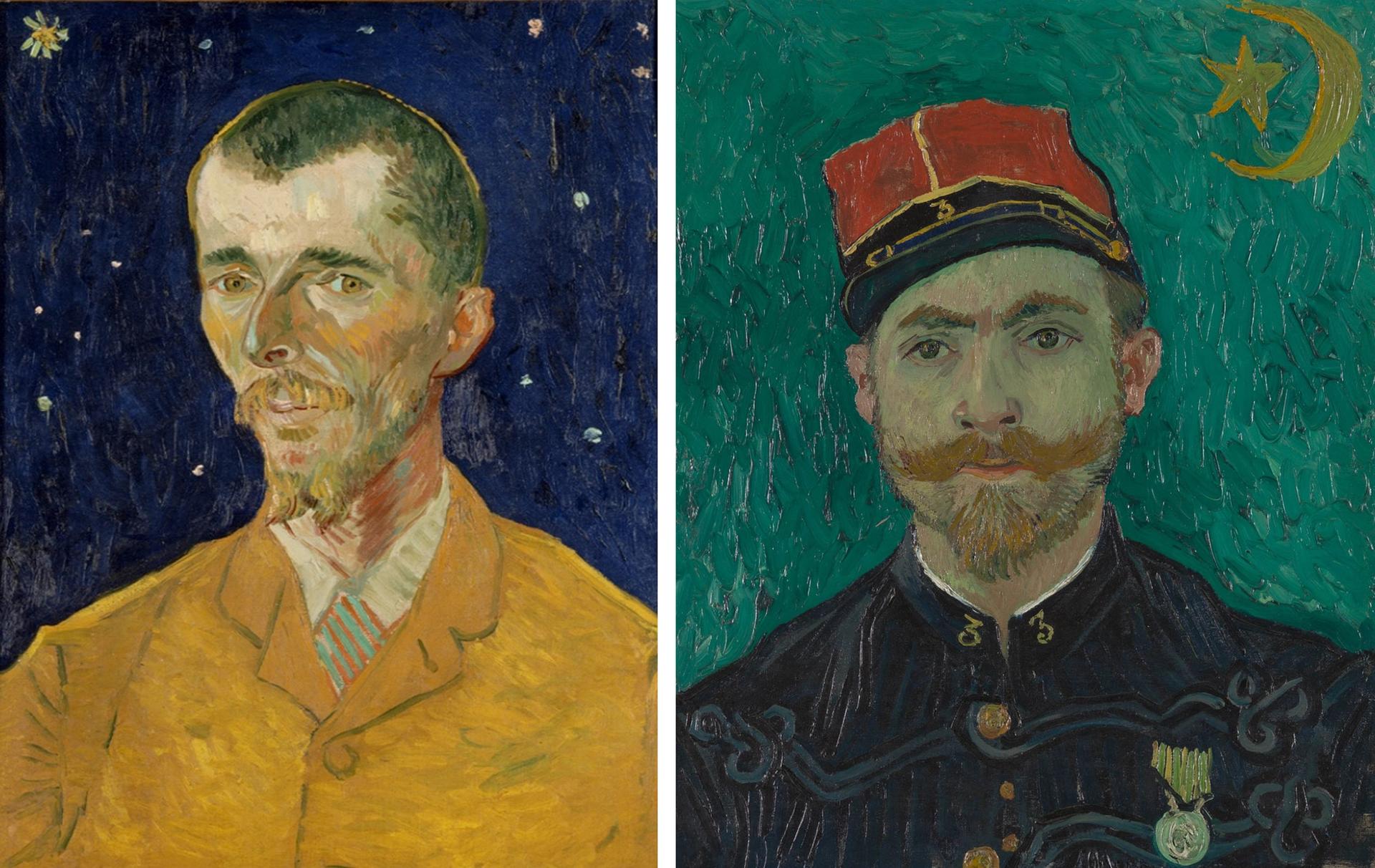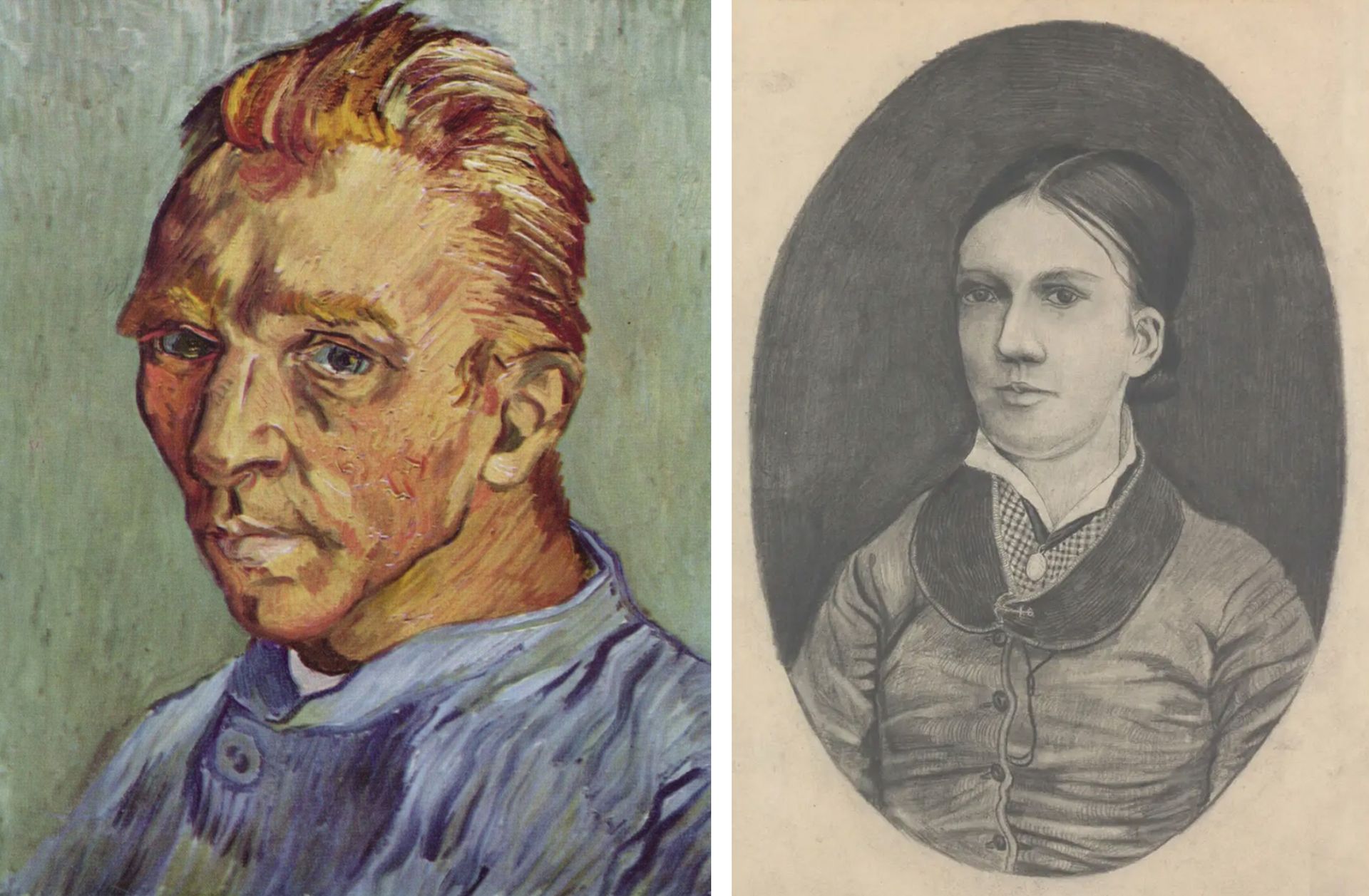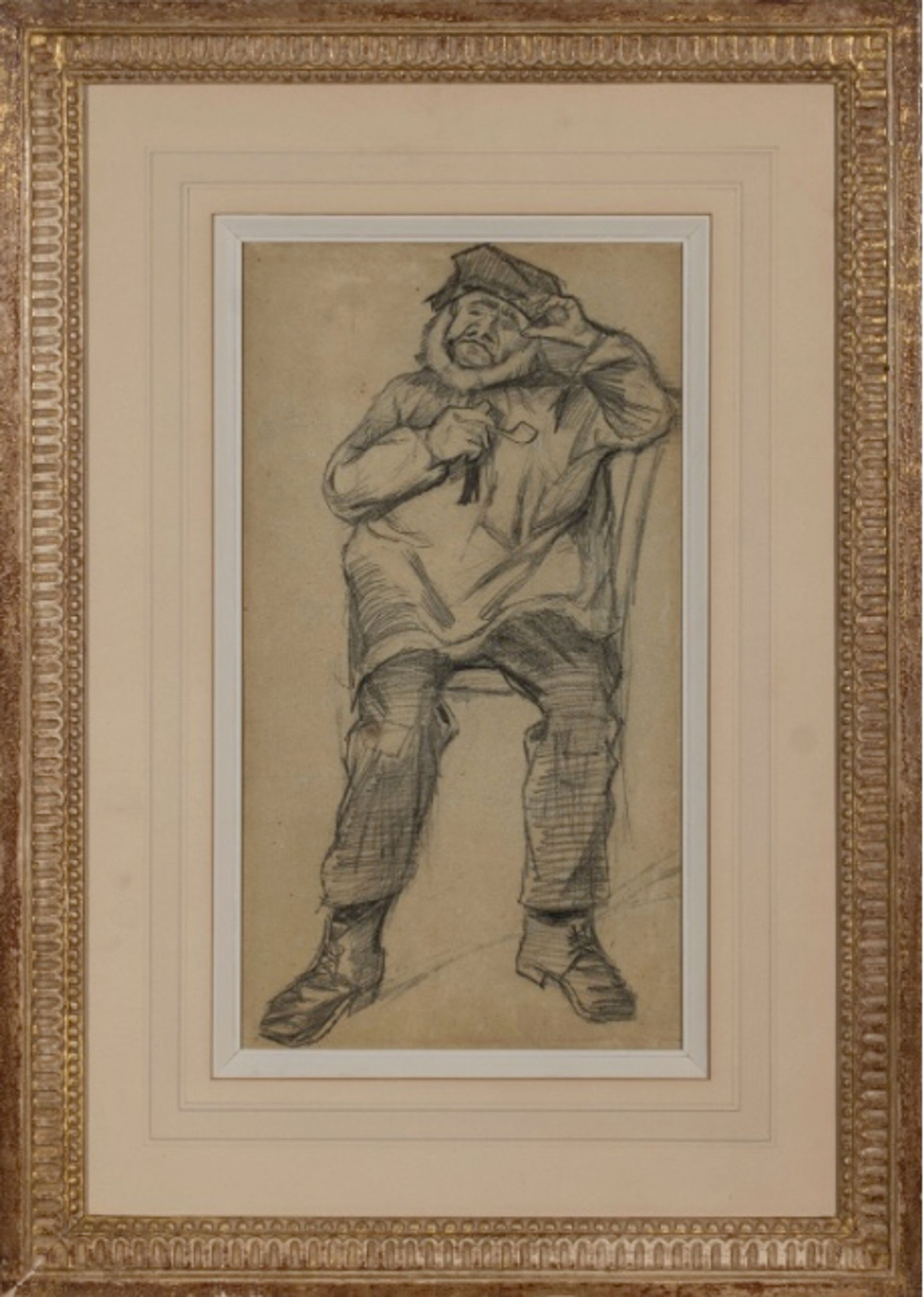An artist can very well hang his most personal paintings in his bedroom and the most important above his bed. Bedroom images were particularly important to Van Gogh, as he sometimes planned his next works before going to sleep. As Vincent wrote to his brother Theo: “The most beautiful paintings are those one dreams of while smoking a pipe in bed.
So what did Van Gogh choose to exhibit in his bedroom at the Yellow House, his house in Arles? When he painted for the first time Bedroom (October 1888) he placed a framed landscape above his pillows and beside his bed were the portraits of two good friends, the artist Eugene Boch and the soldier Paul-Eugene Milliet. He had completed the two portraits a month before representing them in Bedroom.

by Van Gogh Portrait of Eugene Boch (September 1888) and Portrait of Paul-Eugene Milliet (September 1888)
Credits: Musée d’Orsay, Paris and Kröller-Müller Museum, Otterlo
Boch, whom he describes as a “poet”, is a Belgian artist who worked in Arles. His sister Anna later became the only person having bought an identified painting by Van Gogh during his lifetime.
Milliet, who served in the Zouaves regiment, was referred to by Van Gogh as “the lover”, due to the soldier’s reputed success with young women. On October 2, 1888, Van Gogh wrote to Boch to say that the portraits of him and Milliet are “in my room”.
Below the two portraits in Bedroom are sketchy prints of two framed works, possibly Japanese prints, which Van Gogh greatly admired. Above the sink is a mirror, which he probably used to take self-portraits.

Van Gogh’s later copy of Bedroom (September 1889), now in Chicago, and its smaller replica of Bedroom (September 1889), currently in Paris
Credits: Art Institute of Chicago and Musée d’Orsay, Paris
Nearly a year later, he made two painted copies of Bedroom, a large format And a small replica to send to his mother Anna and his younger sister Wil (Willemien). By then he had left the Yellow House and moved to the asylum just outside Saint-Rémy-de-Provence. Interestingly, he changed both portraits, presumably to please his mother and sister.
Boch was replaced by a self-portrait (September 1889), the one showing him, exceptionally, without a beard. He also sent this self-portrait to his mother and Wil. The other portrait, replacing Milliet, is that of a woman and does not correspond to any known painting by Vincent. I tentatively suggest that it might represent his sister Willthen 27 years old. We know his face from several photographs and a much older drawing by Vincent (July 1881).

by Van Gogh Self-portrait without beard (September 1889) and Portrait of Will (Willemien) van Gogh (July 1881)
Credits: private collection and Kröller-Müller Museum, Otterlo
There remains the question of the landscape suspended above Van Gogh’s pillow. It changes somewhat in the three compositions of Bedroom, but again it does not match any known painting by Van Gogh. It could be a real lost work, but the fact that it varies in the three compositions makes it rather an imaginary Provençal landscape with a tree.

Landscape details in the three versions of Bedroom: works currently in Amsterdam, Chicago and Paris
Credits: Van Gogh Museum, Amsterdam (Vincent van Gogh Foundation), Art Institute of Chicago and Musée d’Orsay, Paris
When Vincent sent the smallest replica of Bedroom and the self-portrait to his mother and sister, as they moved into a new home in Leiden, he wrote modestly: “Don’t feel uncomfortable hanging them in a hallway, in the kitchen, in the ‘stairs. ” Bedroom is now one of the star works of the Musée d’Orsay in Paris. In 1998, the self-portrait sold for $72 million (equivalent to $135 million today).
Other Van Gogh short stories:
Two Van Gogh drawings are auctioned in London.

by Van Gogh Woman at the edge of the sink, in a garden (September-October 1885)
Credit: The arts journal
Woman near the washing tub, in a garden (September-October 1885) is offered by Christie’s on June 28, estimated between £1.2m and £1.8m. This finely worked and signed work was drawn in Nuenen, the village of Vincent’s parents. It was once part of the famous collection of Swiss collector Robert von Hirsch.

by Van Gogh Orphan, wearing a blouse, sitting with a pipe (autumn 1882)
Credit: Sotheby’s
Orphan, wearing a blouse, sitting with a pipe (autumn 1882) is an earlier work, produced when Van Gogh was living in The Hague. The drawing depicts a resident of a nearby hospice. It arrives at Sotheby’s on June 28, with an estimate of £250,000-350,000. The seller is a Japanese collector.
